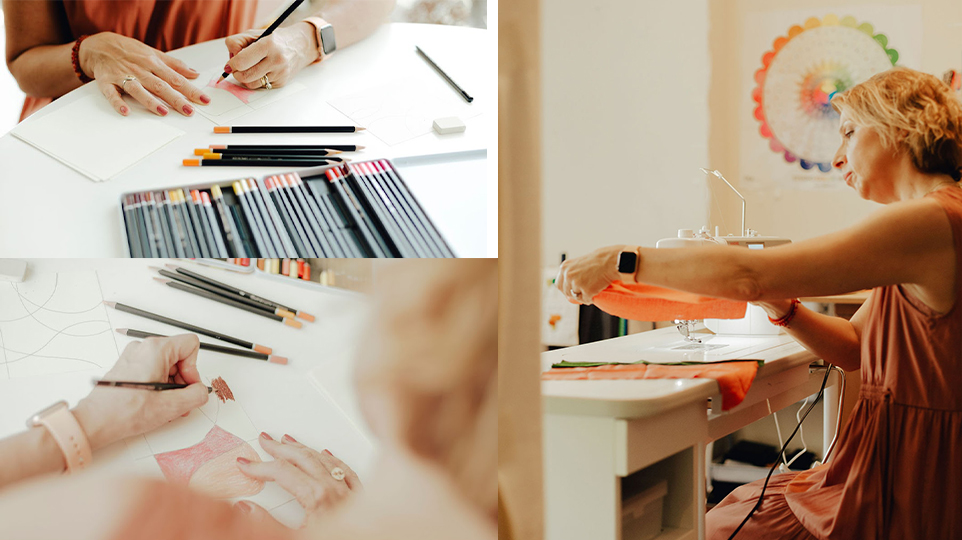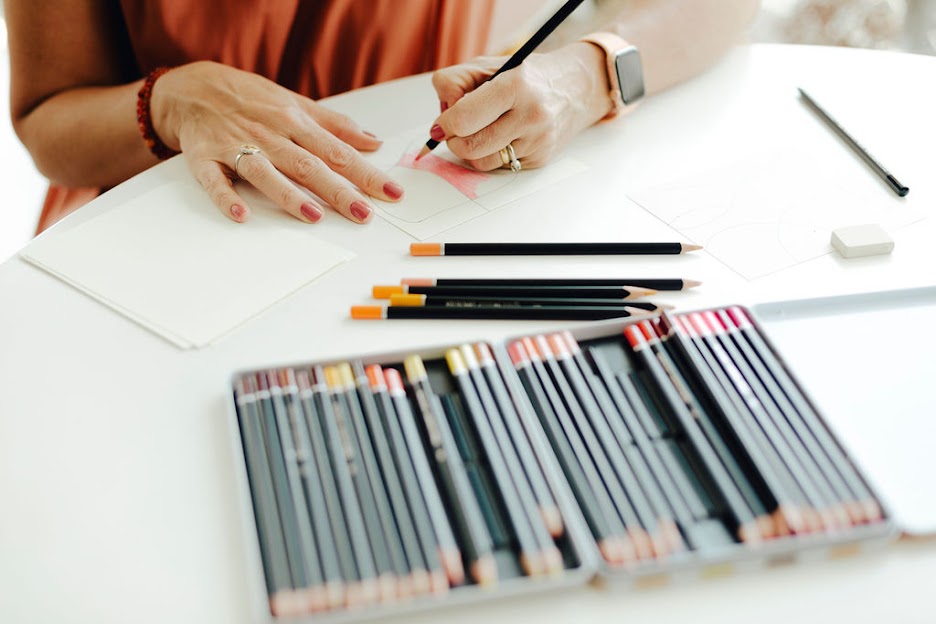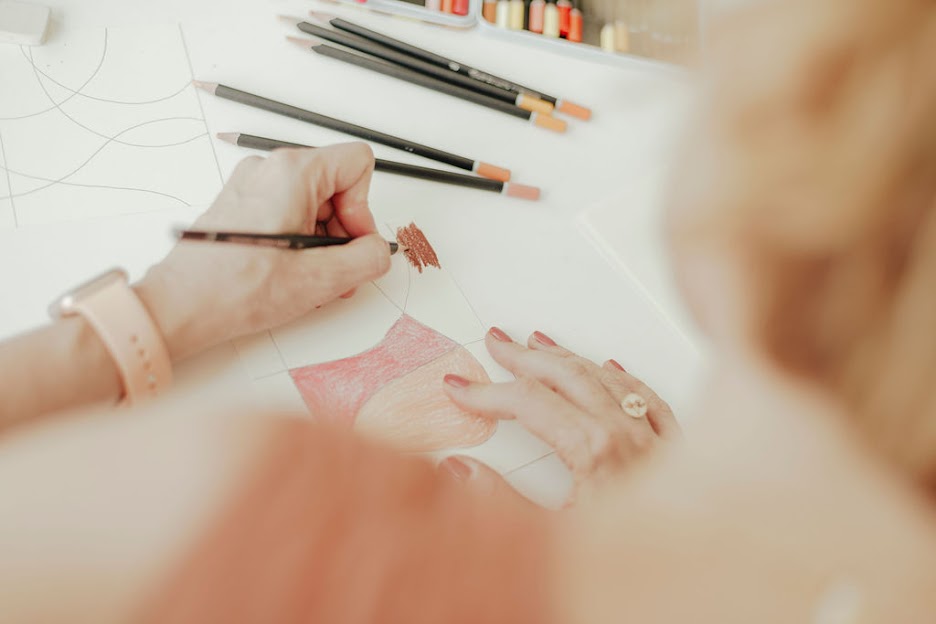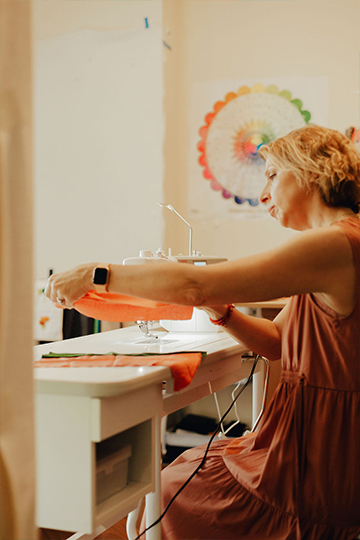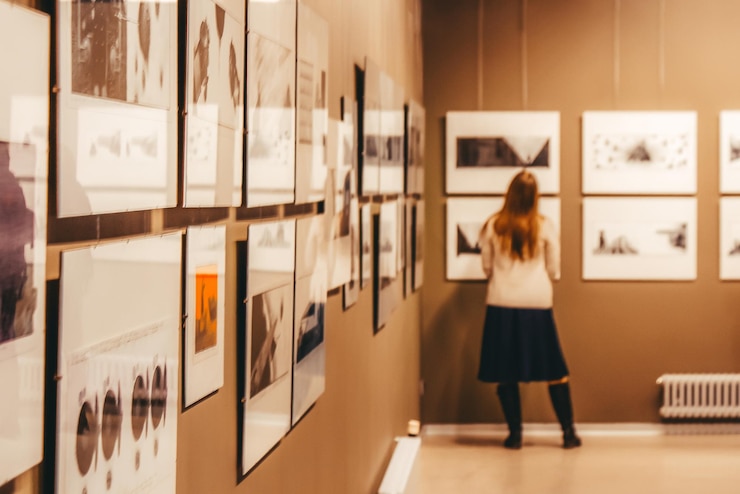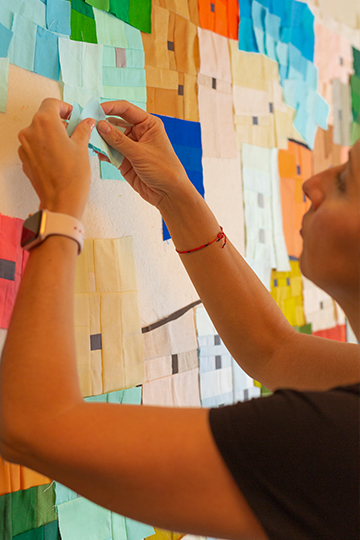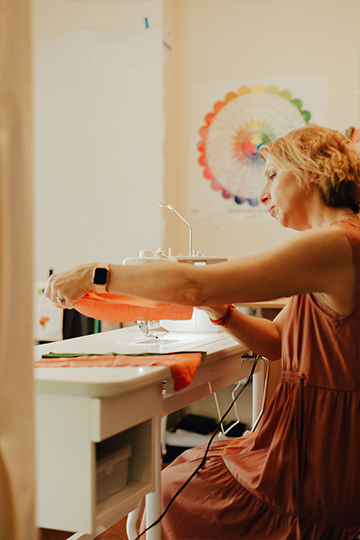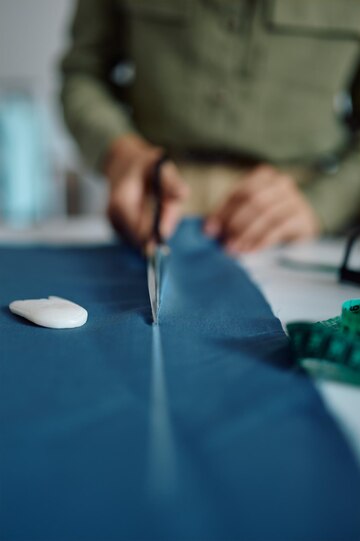Are you an improvisational quilter looking for creative techniques to help fuel your creativity? If so, you’re in the right place. In this blog post, we’ll be exploring some of the most effective improv quilting tricks that will help spark your creativity and take your creative practice to the next level. From tips on color theory to advice on how to break out of a creative rut, this post is packed with useful information to help get your creative juices flowing. So what are you waiting for? Let’s dive in and explore how to fuel your creativity with these improv quilting tricks!

The Importance of Developing Your Creative Practice
Developing your creative practice is essential for anyone who wants to unlock their full potential as an artist, whether you’re an improv quilter or another type of creative individual. A creative practice serves as the gateway to spontaneous creation and the ability to generate unique designs that truly reflect your personal style.
By engaging in regular creative practice, you not only improve your technical skills but also cultivate your artistic intuition and develop a deep understanding of your own creative process. This practice allows you to experiment with different materials, techniques, and concepts, pushing the boundaries of your creativity and discovering new possibilities.
Furthermore, creative practice helps you develop a sense of discipline and commitment to your craft. It encourages you to set aside dedicated time for creative exploration, ensuring that your artistic skills and ideas continue to grow and evolve. It provides a space for you to focus on your creative passions, away from the distractions of everyday life.
In addition to honing your artistic abilities, a creative practice also nurtures your mental and emotional well-being. Engaging in creative activities has been shown to reduce stress, boost self-esteem, and promote overall mental health. It allows for self-expression and offers a therapeutic outlet for emotions and experiences.
Ultimately, developing your creative practice is an investment in yourself and your artistic journey. It opens up a world of endless possibilities and allows you to express yourself authentically through your work. So, fuel your creativity and embark on the journey of developing your creative practice – you’ll be amazed at the beautiful designs you’re capable of creating.
Finding Inspiration for Your Quilt Designs
When it comes to creating unique and inspiring quilt designs, finding inspiration is essential. There are countless sources of inspiration out there that can spark your creativity and help you develop your own artistic voice. Here are a few ways to find inspiration for your quilt designs:
1. Look at different pieces of artwork: Take a trip to your local art museum or browse through art books to explore different styles and techniques. From the impressionist period to modern abstract art, you’ll find a wealth of ideas to inspire your quilt designs.
2. Listen to classical music and jazz: Music can evoke strong emotions and create a mood that can influence your creative process. Experiment with different genres and let the melodies and rhythms inspire unique patterns, color combinations, and textures for your quilts.
3. Interact with other quilters and artists: Join quilting groups, attend workshops, or connect with fellow artists online. Engaging with others who share your passion for quilting can lead to fruitful discussions, exchange of ideas, and even collaborations. Their perspectives and experiences can spark new ideas and challenge your creativity in unexpected ways.
4. Nature and the outdoors: Take a walk in nature and observe the colors, patterns, and textures around you. Whether it’s the vibrant hues of a sunset or the intricate details of a flower, nature can offer endless inspiration for your quilt designs.
Remember, inspiration can come from anywhere and everywhere. Stay open-minded, keep exploring different avenues, and let your imagination run wild. With a world full of possibilities, you’ll never run out of ideas for your improv quilting creations.
Exploring Different Techniques and Materials
When it comes to developing your creative practice in quilting, it’s essential to explore different techniques and materials. Not only does this help you grow as a quilter, but it also adds excitement and variety to your work.
One technique that can greatly enhance your quilting skills is English Paper Piecing (EPP). This traditional quilting method involves hand-sewing fabric pieces around paper templates, creating precise and intricate designs. EPP not only allows for greater control over your quilt’s composition but also encourages you to experiment with different shapes and patterns. By challenging yourself to learn and master EPP, you’ll be expanding your quilting repertoire and opening up a world of possibilities for your creative practice.
- In addition to exploring different techniques, experimenting with various materials and fabrics can fuel your approach to creative quilting. By incorporating different colors and textures, you can add depth, interest, and a personal touch to your quilts. Play around with vibrant and contrasting colors to create eye-catching designs. Experiment with textured materials, such as velvet or lace, to add dimension and tactile appeal to your quilts. Mixing different fabric types, such as cotton, linen, or silk, can also bring unique qualities and richness to your work. The more you explore and incorporate different techniques and materials into your quilting, the more you’ll develop your creative practice and find your unique voice in the world of improv quilting.
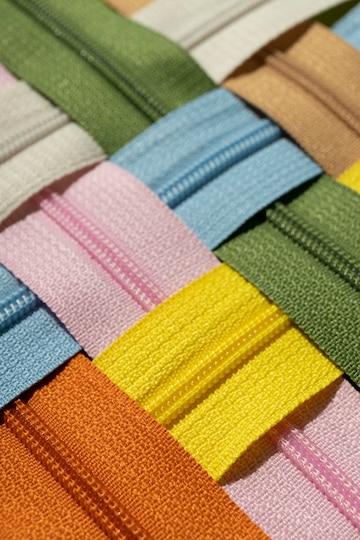
Breaking Free from Perfectionism
Perfectionism can be a major hindrance when it comes to developing your creative practice, especially in the world of quilting. Traditional quilting techniques often emphasize precision, symmetry, and uniformity, which can limit your creative freedom and lead to a fear of making mistakes.
When you break free from perfectionism, you open yourself up to a world of possibilities. Embracing imperfections and letting go of the need for everything to be flawless allows you to explore new techniques, experiment with different materials, and take risks in your quilting designs. It encourages you to step outside of your comfort zone and push the boundaries of your creativity.
By embracing imperfections, you give yourself permission to make mistakes and learn from them. In fact, some of the most interesting and unique quilt designs are born from happy accidents and unexpected outcomes. These imperfections add character and depth to your quilts, making them truly one-of-a-kind pieces of art.
Breaking free from perfectionism also allows you to incorporate your own personal style and storytelling into your quilts. When you let go of rigid rules and expectations, you can infuse your quilts with your own experiences, emotions, and perspectives. This adds a layer of authenticity and meaning to your work, making it more fulfilling and inspiring for both yourself and others.
To break free from perfectionism, start by giving yourself permission to make mistakes and embracing imperfections as opportunities for growth. Challenge yourself to try new techniques and materials, even if they may not yield perfect results. Embrace the process of creating and allow yourself to enjoy the journey, rather than solely focusing on the end result.
Remember, the beauty of quilting lies not in its perfection, but in the creativity and passion that shines through each stitch. So, break free from perfectionism, embrace your creativity, and watch your quilting practice flourish.
Embracing Mistakes and Happy Accidents
In the world of quilting, mistakes can sometimes feel like the end of the world. A crooked seam, a misplaced patchwork piece, or a color choice that didn’t quite work out can send even the most seasoned quilter into a frenzy. However, it’s important to remember that mistakes can also be the catalyst for creative breakthroughs and unexpected masterpieces.
Throughout history, many famous artists have embraced mistakes and accidents in their work. One such example is the renowned abstract expressionist painter, Jackson Pollock. Known for his unique “drip painting” technique, Pollock would often splatter and pour paint onto his canvas in an improvisational manner. While this approach inevitably led to countless unintended drips and splashes, Pollock embraced these “happy accidents” and incorporated them into his finished pieces, resulting in visually dynamic and emotionally charged artworks.
Similarly, quilt artist Denyse Schmidt is well-known for her improvisational quilting style. Rather than meticulously planning every stitch and fabric placement, Schmidt allows herself the freedom to make mistakes and take risks. Through this approach, she often discovers unexpected combinations of color, pattern, and texture that add depth and interest to her quilts.
Embracing mistakes in quilting can lead to new discoveries in your approach. Perhaps a misplaced patchwork piece creates an interesting juxtaposition or a crooked seam adds a touch of whimsy. These imperfections can become the signature elements of your quilt, setting it apart from the cookie-cutter perfection of mass-produced pieces.
So, the next time you make a mistake in your quilting, take a step back and evaluate the possibilities. Embrace the imperfections and allow them to guide you toward new creative avenues. Remember, some of the most celebrated artworks in history have been born from happy accidents.
Incorporating Personal Stories into Your Quilts
One of the most beautiful aspects of quilting is the opportunity to tell a story through fabric. Just as painters use their canvas to express their emotions and experiences, quilters can incorporate personal stories into their quilts to create meaningful and unique works of art.
There are several ways quilters can bring their stories to life within their quilts. One approach is to create quilts that are dedicated to someone special in their lives. For example, a quilt made in memory of a loved one can be adorned with their favorite colors, fabrics, or symbols that represent their personality or interests. This dedication adds depth and meaning to the quilt, making it a heartfelt tribute.
Another way to incorporate personal stories is by incorporating real-world themes into your quilts. Just as painters often tackle social issues or political topics in their art, quilters can use their quilts as a platform to raise awareness or share their own perspectives on important subjects. For instance, a quilt could be created to highlight environmental issues, incorporating fabrics that represent the beauty of nature and using quilting techniques to mimic natural elements like waves or leaves.
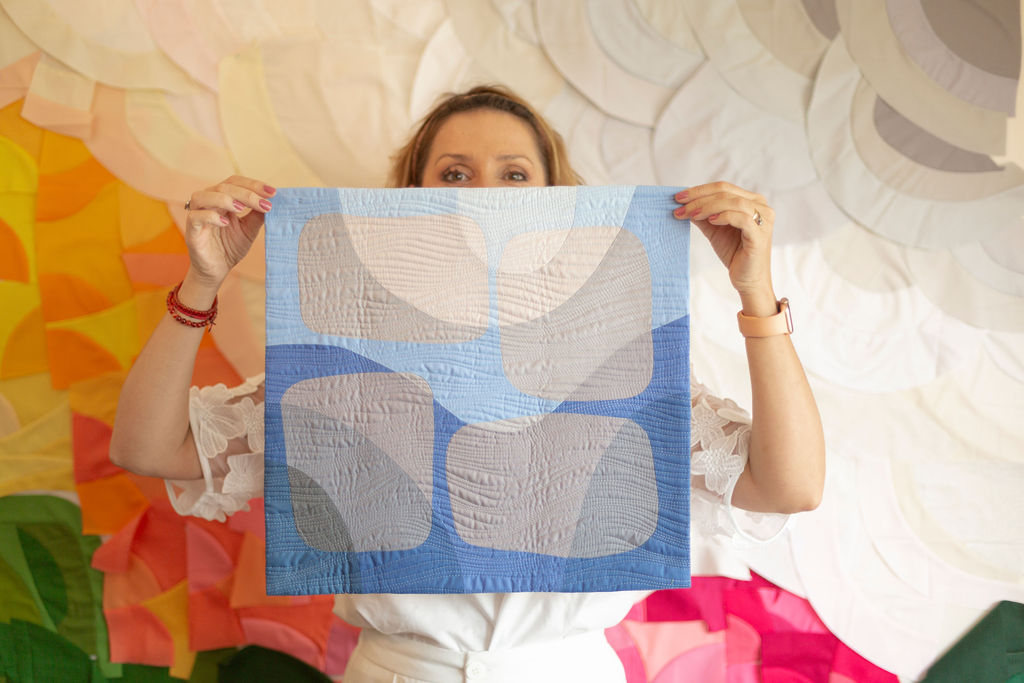
Looking to other art forms can provide inspiration for incorporating stories into quilting. Painters like Frida Kahlo and Vincent van Gogh often painted their own personal experiences and emotions. Quilters can draw inspiration from these artists by using techniques like appliqué or embroidery to depict personal experiences, such as a favorite travel destination or a cherished memory.
Incorporating personal stories into quilts allows quilters to not only express their creativity but also create pieces that hold deep meaning and connection. Whether through dedications or exploring real-world themes, telling stories through quilts adds an extra layer of beauty and significance to the art form.
Creating a Quilting Routine and Setting Goals
Developing a quilting routine and setting goals is essential for anyone looking to enhance their creative practice, especially for those involved in improv quilting. By creating a routine, you can establish a dedicated time and space for your quilting practice, ensuring that it becomes an integral part of your daily or weekly schedule.
To create a quilting routine, start by identifying the time of day when you feel most inspired and productive. It could be early morning, during lunch breaks, or in the evening after work. Once you’ve determined the best time for you, block off that period on your calendar or set a reminder on your phone to dedicate to quilting.
Setting goals is another crucial aspect of developing your creative practice. Begin by defining what you want to achieve with your quilting. It could be finishing a certain number of quilts within a specific timeframe, mastering a new quilting technique, or participating in a quilting exhibition. Break down these larger goals into smaller, actionable steps that you can work towards daily or weekly.
Regularly reassess and adjust your goals as you progress. Remember, the key is to challenge yourself but also be realistic and kind to yourself. Setting unattainable goals may lead to frustration and hinder your creative growth.
These principles of creating a routine and setting goals can be applied to other art practices as well. Whether you’re a painter, writer, or musician, establishing a routine and setting goals will provide structure, motivation, and a sense of progress to your creative journey. So, start developing your quilting routine and setting achievable goals, and watch as your creative practice flourishes.


